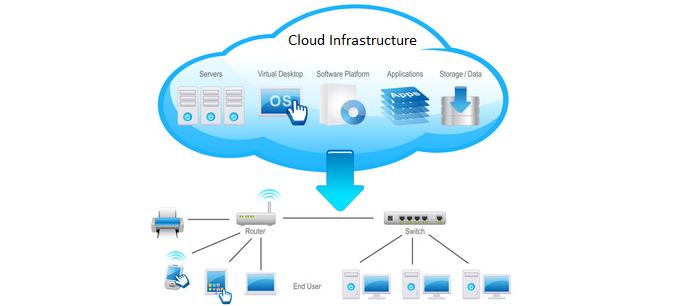IT Infrastructure in 2011

The Path To Efficiency Is Through The “Cloud Computing”
Economic turmoil in 2008 led many companies to restructure their costs and focus on a more rational use of resources. Primarily, the companies began to reduce funding of non-core activities, which are often among the maintenance and development of its IT infrastructure. This wave came into vogue terms such as “consolidation”, “virtualization” and “cloud services”. But if the first two concepts were generally well accepted in business, then the cloud for many managers are still somewhat abstract and intimidating.
The most familiar and common definition of cloud services sounds like “providing end users with remote dynamic access to services, computing resources and applications (including operating systems and infrastructure) over the Internet.” Usually it is the mention of the word “Internet” discourages managers, creating a feeling of insecurity of their information assets. It is necessary to replace the phrase “through the Internet” to “anywhere”, implying, in particular, and the enterprise network, it becomes clear that the company is already in the cloud. As a rule, in large and medium-sized organizations key business applications have already been consolidated within a single data center or central office, are accessible from both the local network or from remote offices. This is also a cloud, it is simply a small and their own – so-called private.
Private or public cloud providers?
Types of clouds, by and large, only two – both private and public. To the public include proprietary platform clouds major IT players (Google, Microsoft, IBM, HP, Amazon, etc.) and cloud services offered by various independent service providers (typically, service providers and broadband providers). Private clouds are managed by its own IT services and provide services for internal use and for use by customers and partners.
From the perspective of the end user, it is not much different from what the clouds get service from, the private or public. If you watch from the owner of information resources, it should be to seek a reasonable balance between convenience and cost. Creating a private cloud will allow the company to form their own directory services and their quality indicators, full control over information assets. But this organization must bear the related costs (personnel, equipment, software, etc.). Use of public clouds allow the enterprise to reduce the cost of maintenance and IT infrastructure, but the range of services will limit the opportunities for cloud providers.
- How Cloud Computing Is Changing The Labor Market - March 25, 2015
- Adopting Infrastructure as a Service Can be a Good Deal - March 17, 2015
- Will Virtualize? Take These Six Points Into Consideration - March 12, 2015